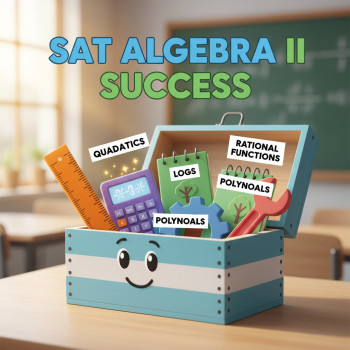Welcome — Let’s Talk About Scores, Scholarships, and Sanity
Picture this: a college acceptance letter that comes with a scholarship sizable enough to turn the phrase “sticker price” into a distant memory. It’s the dream for many families, and for a lot of students, excellent SAT scores open the door to those kinds of merit awards. But what does “excellent” actually mean in 2025, when testing policies, scholarship formulas, and admission priorities keep evolving?
This guide walks you through realistic SAT score targets for full or near-full scholarships at top colleges, what schools typically look for, how to position an application beyond a raw number, and practical steps you and your student can take — including how tailored support such as Sparkl’s personalized tutoring can make the process more efficient and less stressful.

Quick reality check: There’s no single “full-scholarship” SAT number
Top colleges use different scholarship models. Some offer need-based aid that depends on family financials and not test scores at all. Others award merit scholarships — a combination of grades, essays, activities, and test scores. Still others have hybrid systems or automatic scholarship thresholds tied to a specific SAT range.
Bottom line: there isn’t one magic SAT score that guarantees a full scholarship everywhere. But you can set sensible target ranges and strategies depending on the type of award you want and the schools you’re aiming for.
How to think about the ranges
- Automatic merit scholarships: Many public universities and some private colleges publish SAT ranges that trigger automatic awards. These are often generous at regional publics and smaller private institutions.
- Top national universities: Ivy-level and other very selective schools rarely advertise SAT thresholds for large merit awards, because most aid there is need-based. Exceptional merit scholarships (full-ride or near full) are rare and usually awarded for extraordinary talent, leadership, or special circumstances.
- Competitive merit at top-ranked private colleges: At many high-ranking private institutions, a very high SAT (e.g., 1480–1600 on the 1600 scale) combined with exceptional application elements increases the chance of large merit awards — but it’s still not guaranteed.
Estimated SAT score targets by scholarship type
Use these as planning targets rather than firm rules. Schools change policies and scholarship budgets from year to year. Also remember the SAT is one piece of a broader application puzzle.
| Scholarship Type | Typical SAT Range (1600 scale) | What Else Matters |
|---|---|---|
| Automatic merit at strong public universities | 1300–1480 | GPA, course rigor, residency (in-state vs out-of-state), timing of application |
| Large merit awards at selective privates (partial to near-full) | 1450–1580 | Compelling essays, leadership, portfolio/subject talent, demonstrated interest |
| Exceptional full scholarships at top national schools | 1550–1600 (often with additional credentials) | Unique achievements, research, creative/athletic distinction, alumni nominations |
| Need-based full-ride (not score-dependent) | Any score — determined by financial need | FAFSA/CSS Profile, family finances, institutional policy |
A quick example to make sense of ranges
Imagine two applicants to the same private university that offers a few merit scholarships each year:
- Student A: SAT 1520, GPA 3.9, president of a state-level club, excellent essays → strong candidate for a sizable merit award
- Student B: SAT 1560, GPA 3.6, less extracurricular depth → may receive a smaller merit scholarship despite the higher score
That demonstrates why scores must be paired with a compelling overall application.
How colleges use SAT scores in scholarship decisions
Schools often use SAT scores differently for admissions and scholarship decisions. Some key patterns:
- Cutoff-triggered awards: Certain programs state clear thresholds — reach X and you qualify for Y amount (common at many public universities).
- Comparative evaluation: Selective colleges view SATs as one factor among many for limited merit funds; higher scores improve your competitive edge but don’t guarantee awards.
- Scholarship committees: At private colleges, committees weigh the whole file — academics, leadership, essays, recommendations, portfolio or interview where relevant.
Tip: Apply early when it helps
Some schools allocate scholarship funds on a first-come, first-served basis or give priority to Early Decision/Early Action applicants. If you have a competitive profile, applying early can increase your shot at larger awards.

Score vs. cost: Sample scenarios
Below are three realistic scenarios to illustrate how SATs interact with scholarships and net cost.
Scenario 1 — The strong state student
Sam is in-state at a flagship public university. With an SAT of 1460 and a 3.9 GPA, Sam qualifies for an automatic merit scholarship that covers tuition and fees. Living expenses remain separate, but tuition coverage cuts the college bill dramatically.
Scenario 2 — The selective private applicant
Aisha has a 1550 SAT, 4.0 GPA, and strong research experience. Several selective private colleges offer her partial-to-large merit awards; one offers a near-full scholarship because they value her academic fit and research. Her financial aid package also includes institutional need-based support thanks to FAFSA/CSS Profile.
Scenario 3 — The need-based full ride
Jordan’s SAT is 1280, but his family demonstrates significant financial need. He’s admitted to a college that meets full demonstrated need through grant aid and institutional scholarships — a full cost-of-attendance package regardless of the SAT number.
Actionable plan: How students should target SAT scores for scholarships
Follow this roadmap to convert ambition into a structured plan.
- 1) Build your college list by scholarship type. Identify schools that award automatic merit, schools that offer large discretionary merit, and schools that are primarily need-based.
- 2) Find published thresholds. Many schools publish automatic scholarship thresholds on their financial aid or admissions pages; for others, look at admitted student data or schedule an admissions office call.
- 3) Set a personalized SAT target range. Aim 30–80 points above the published threshold for automatic awards to add a buffer and increase competitiveness.
- 4) Balance GPA and rigor. Colleges value rigorous coursework; a strong transcript paired with a tailored SAT strategy increases scholarship odds.
- 5) Practice strategically and measure progress. Take timed practice tests, analyze missed concepts, and iterate your plan.
How long does effective prep take?
This depends on baseline scores, target improvement, and time availability. On average:
- Small improvements (20–60 points): 4–8 weeks of focused practice.
- Moderate improvements (60–120 points): 3–6 months with consistent, targeted work.
- Large improvements (120+ points): 6–12 months, pairing test strategy with content review and practice tests.
Study plan essentials — quality over quantity
Not all prep hours are equal. Here’s a compact plan that prioritizes high-impact work.
- Diagnostic test: Start with a full practice test to identify weaknesses and set realistic goals.
- Focused content blocks: Rotate 60–90 minute sessions on pivotal areas (reading comprehension, math concepts, grammar/command of evidence).
- Timed practice tests: Take a full, timed test every 2–3 weeks to build stamina and refine pacing.
- Error log: Keep a detailed log of mistakes, categorize them, and revisit persistent patterns weekly.
- Application tie-in: Practice essay and short-answer prompts that align with scholarship application materials.
Where personalized tutoring helps
For many students, 1-on-1 tutoring accelerates progress by tailoring instruction to individual weaknesses and learning style. Sparkl’s personalized tutoring model — including one-on-one guidance, tailored study plans, expert tutors, and AI-driven insights — can be particularly effective for students aiming for scholarship-level scores. A skilled tutor helps prioritize high-yield content, improves test strategies, and keeps motivation high while adapting plans as scores change.
Beyond the score: Build an application that multiplies the value of your SAT
Even at schools that heavily weigh tests, admissions and scholarship committees look for applicants who add value to the campus. Here’s how to amplify your candidacy:
- Compelling essays: Use storytelling to show growth, resilience, and clarity of purpose.
- Leadership and impact: Demonstrate measurable outcomes in clubs, community work, or research.
- Academic fit: Highlight why your interests match a college’s programs and faculty.
- Recommendations: Choose recommenders who can tell specific stories about your strengths.
- Optional materials: Submit portfolios, research summaries, or supplementary essays if relevant.
Sample scholarship checklist: What to do, and when
Starting early increases opportunity. Here’s a semester-by-semester checklist for juniors and seniors.
| Timeframe | Focus | Actions |
|---|---|---|
| Junior Year (Spring/Summer) | Baseline & planning | Take a diagnostic SAT, research schools’ scholarship policies, set score targets, begin structured prep. |
| Junior Year (Fall/Winter) | Score improvement | Regular practice tests, targeted tutoring as needed, update activity list, identify recommenders. |
| Senior Year (Summer/Fall) | Finalize applications | Polish essays, apply Early Action/Early Decision where strategic, submit test scores to schools with thresholds. |
| Senior Year (Fall/Winter) | Apply & follow up | Submit FAFSA/CSS Profile for need-based aid, check scholarship deadlines, interview or provide supplements if requested. |
Common myths and clear realities
- Myth: You need a perfect SAT for a full scholarship. Reality: Many scholarships depend on a combination of factors; perfect scores help but aren’t always necessary.
- Myth: Public schools don’t give big scholarships. Reality: Many state universities offer automatic scholarships that can cover tuition or more, especially for out-of-state students with top scores.
- Myth: Test-optional means tests don’t matter. Reality: If your score strengthens your profile relative to the applicant pool, submitting it can increase both admissions and scholarship chances.
How to evaluate scholarship offers
When scholarship award letters arrive, compare net costs — not just award amounts. Look for:
- Tuition vs cost of attendance: Some scholarships cover tuition only; others include room, board, and fees.
- Renewal requirements: Does the scholarship require a certain GPA or campus involvement to renew?
- One-time vs multi-year awards: Is the scholarship a single-year boost or renewable through graduation?
- Stackability: Can institutional scholarships be combined with federal or state grants?
Final encouragement — play the long game
Chasing a specific SAT number can be stressful; chasing a better version of your application is healthier and more effective. Start early, take smart practice tests, and keep your academic and extracurricular profile growing. If you have a target scholarship in mind, work backward from the school’s published thresholds and the profile of previous recipients.
Personalized support, when used well, makes a real difference. Sparkl’s 1-on-1 tutoring, tailored study plans, and AI-driven insights can help students improve scores faster, refine application strengths, and keep momentum during an intense process — without burning out.
Parting practical tips
- Document everything: Keep a simple spreadsheet of schools, scholarship criteria, deadlines, and required materials.
- Communicate with admissions and financial aid offices: Clarify renewal criteria and whether your scholarship is stackable.
- Retake strategically: If one more 20–40 point gain unlocks a significantly larger scholarship, it’s often worth the effort.
- Use professional guidance wisely: Tutors and counselors should focus on high-leverage work — not a one-size-fits-all routine.
Conclusion — a roadmap, not a guarantee
Scoring for scholarships is both art and science. Numbers matter, but context matters more. By setting realistic SAT targets informed by each school’s scholarship model, building a standout application, and using targeted support where it matters, your family can dramatically increase the chance of a full or substantial scholarship.
If you’d like help building a customized study plan, decoding school-specific scholarship rules, or getting the one-on-one support that accelerates score gains, consider reaching out to a tutor who builds plans around your student’s needs. With focus, strategy, and the right support, a life-changing scholarship is a reachable goal.
Wishing you clear goals, calm prep, and good luck — your college chapter is worth the careful planning.















No Comments
Leave a comment Cancel